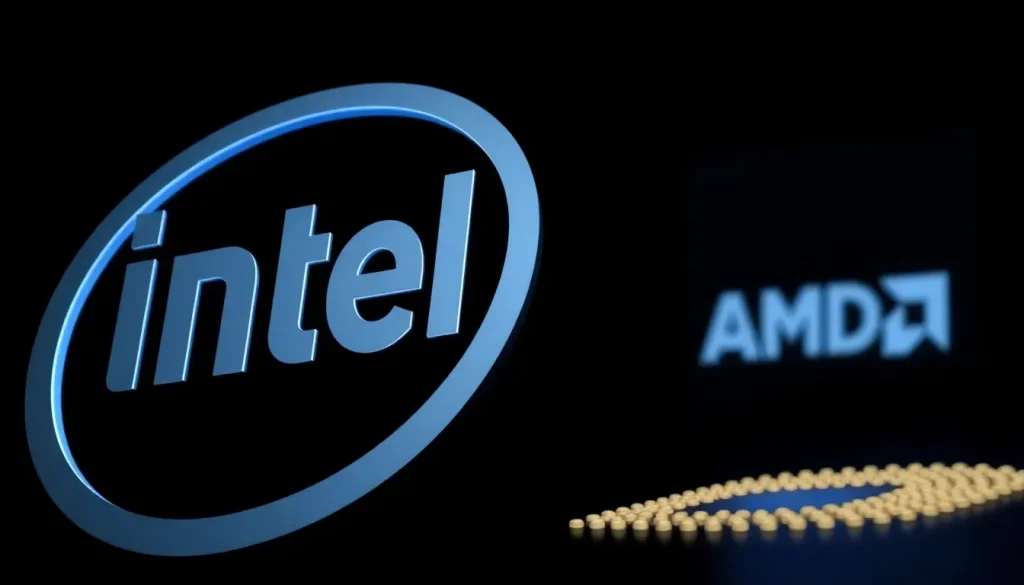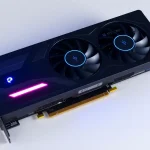Intel negotiating to produce AMD chips, say insider sources

In a rapidly evolving tech landscape, Intel is making significant moves to reclaim its position in the semiconductor industry. Recent reports suggest that Intel is not only focusing on collaborations with major players like Nvidia but is also actively negotiating to become a manufacturing partner for AMD chips. This development could reshape the dynamics of the chip manufacturing sector.
As the competition intensifies, understanding the implications of such partnerships becomes crucial. This article will explore why Intel is courting AMD, what the potential collaboration means for the industry, and the broader context of these negotiations.
Reasons behind Intel's interest in AMD as a customer
Intel's pursuit of AMD as a foundry customer is not just a business decision; it stems from a strategic imperative to regain market relevance. For years, Intel has been trailing behind TSMC, the leading chip manufacturer that produces most AMD chips using cutting-edge processes like 5nm and 3nm. In contrast, Intel's own advanced 18A process, comparable to 2nm technology, is not expected to reach mass production until 2025.
This gap in technological advancement has led Intel to consider producing less complex AMD chips initially, leveraging its existing manufacturing capabilities while ramping up investments in higher-end technology. By securing AMD as a customer, Intel can:
- Enhance its Foundry division: A partnership with AMD could provide a much-needed boost to Intel's struggling Foundry division, which has faced challenges in recent years.
- Attract other clients: Securing a prestigious customer like AMD could pave the way for Intel to attract additional clients, including tech giants like Apple, which has also shown interest in Intel's foundry services.
- Capitalize on geopolitical factors: With rising tensions between China and Taiwan, US-based manufacturing presents a strategic advantage. The US government is promoting domestic chip production through initiatives like the CHIPS Act, further incentivizing companies to invest in local capabilities.
- Boost stock performance: Following news of the negotiations, Intel's stock saw a boost of 3.5%, indicating positive market sentiment that could enhance investor confidence.
The implications of this partnership for the semiconductor industry
The potential collaboration between Intel and AMD represents a watershed moment in the semiconductor industry. This partnership could reduce AMD's reliance on TSMC while maintaining their existing cooperation with the company. For Intel, it would signify a step towards achieving profitability in its Foundry division, which has been operating at a loss.
Moreover, the collaboration could lead to several industry-wide changes:
- Increased competition: The partnership could invigorate competition in the chip manufacturing space, as both companies leverage their strengths to deliver more innovative products.
- Shift in manufacturing dynamics: By reducing dependence on overseas manufacturing, this partnership could promote a more resilient supply chain within the US.
- Innovation acceleration: Collaborative efforts may lead to faster development cycles for new chip technologies, benefitting both companies and their customers.
Challenges and considerations for the deal
Despite the promising outlook, several challenges need to be addressed before finalizing the deal between Intel and AMD. Regulatory reviews are one significant hurdle that could delay the agreement. The semiconductor industry is highly scrutinized due to its impact on global markets, and any merger or partnership undergoes thorough examination by regulatory bodies.
Moreover, both companies operate in intensely competitive environments, and there are inherent risks in sharing manufacturing capabilities:
- Intellectual property concerns: Ensuring that proprietary technologies remain protected during collaboration is crucial for both companies.
- Alignment of goals: Both companies must align their strategic objectives to ensure a successful partnership that benefits both sides.
- Market volatility: Rapid changes in market dynamics and consumer preferences can impact the success of the collaboration.
Future outlook for Intel and AMD
The future of Intel and AMD hinges on the success of their negotiations and the potential collaboration. As the tech landscape continues to evolve, both companies must navigate a complex web of challenges and opportunities.
By working together, Intel and AMD could significantly strengthen the US semiconductor market and foster innovation that benefits consumers and industries alike. The broader implications of this partnership extend beyond the companies themselves, potentially reshaping the entire landscape of chip manufacturing.
For those interested in a deeper understanding of the evolving landscape of Intel and AMD, the following video provides additional insights:
Conclusion: A new chapter for Intel and AMD?
As negotiations continue, the potential partnership between Intel and AMD marks a significant shift in the semiconductor industry. Both companies have an opportunity to redefine their roles in the market, collaborate on innovative technologies, and ultimately enhance their competitiveness on the global stage. While the road ahead may be fraught with challenges, the potential rewards make this one of the most intriguing developments to watch in the tech world.




Leave a Reply